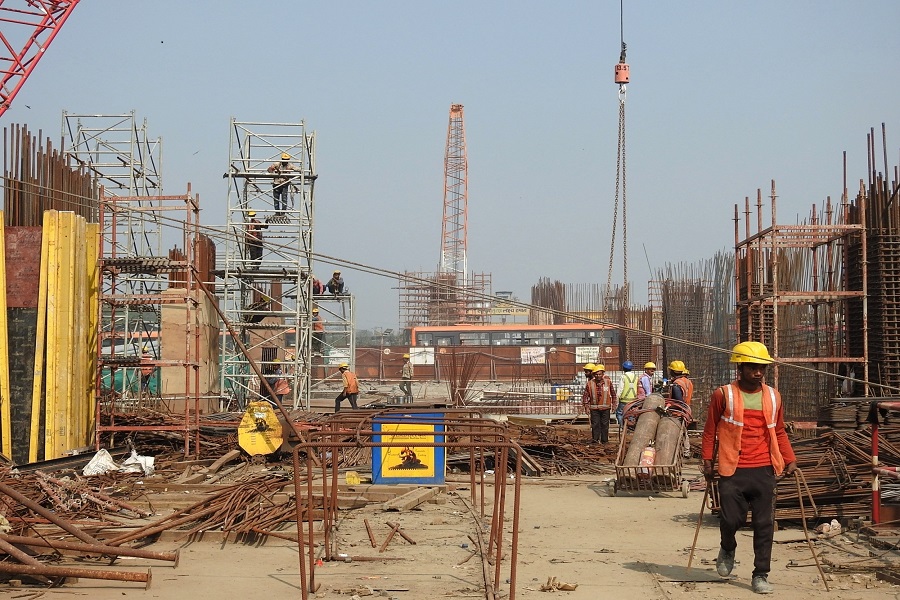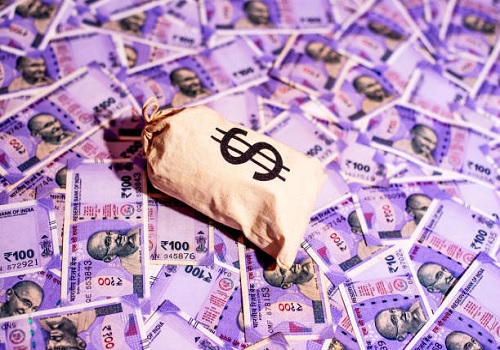Gold trading range for the day is 68350-69750 - Kedia Advisory

Follow us Now on Telegram ! Get daily 10 - 12 important updates on Business, Finance and Investment. Join our Telegram Channel
Gold
Gold prices remained steady at Rs.68,965 yesterday, supported by safe-haven demand and expectations of potential interest rate cuts by the U.S. Federal Reserve. Despite a rebound in the U.S. dollar and Treasury yields limiting gains, the overall outlook for gold remains positive due to several supportive factors. Traders have adjusted their rate cut expectations following a soft U.S. jobs report last week, with projections now anticipating nearly 105 basis points of cuts by the end of the year and a 100% chance of a September rate cut, according to the CME FedWatch Tool. Gold’s appeal as a safe-haven asset has been further bolstered by escalating Middle East tensions. Recent developments, including missile attacks by Iran on Israeli territory in response to the assassination of a Hamas leader by Israel, have heightened geopolitical risks, enhancing gold's attractiveness. In terms of demand, Vietnam has seen a significant increase in gold bar and coin demand, reaching 26 tonnes in the first half of 2024, the highest since 2014. This surge, up 30% year-on-year in Q2, reflects investors seeking refuge from rising inflation and a weaker local currency. In India, gold premiums have decreased following a recovery in prices and the government's easing of import taxes. Premiums charged by dealers have dropped to $7 an ounce from $20, their highest since 2014. Meanwhile, in China, gold premiums have narrowed, and in Japan, prices have fallen sharply in yen terms following a rate hike by the Bank of Japan. Technically, the market is experiencing long liquidation, with open interest decreasing by 1.16% to 18,057 contracts. Gold prices are currently supported at Rs.68,660, with further support potentially at Rs.68,350. Resistance is expected at Rs.69,360, with a move above this level possibly pushing prices towards Rs.69,750.
Trading Ideas:
* Gold trading range for the day is 68350-69750.
* Gold settled flat as US rate-cut optimism, geopolitical risks lend support
* Traders have altered their Fed rate cut expectations, with nearly 105 basis points of cuts anticipated by year-end.
* India June gold import 43.12 tn v 46.25 tn in May and 89.41 tn in June 23
Silver
Silver prices settled down by 0.91% at Rs.78,900 yesterday, reflecting a broader market trend influenced by rising dollar strength and shifting Federal Reserve rate cut expectations. The dollar index climbed to around 103.2, extending gains from the previous session. This increase came as traders moderated their expectations of an imminent emergency rate cut by the Federal Reserve, which had earlier been fueled by a weak jobs report that raised recession fears. Earlier this week, the dollar index had dropped to a near seven-month low, driven by speculation that the Fed might intervene aggressively to lower borrowing costs in response to disappointing economic data. However, recent comments from analysts, including Goldman Sachs CEO David Solomon, suggested that the Fed is unlikely to act before September. Markets are now anticipating a larger 50 basis point rate cut in September, with over 100 basis points of total easing expected for the year. Investor sentiment is also influenced by the ongoing global economic uncertainty and weak corporate earnings, which have heightened expectations for multiple rate cuts by the Federal Reserve. San Francisco Fed President Mary Daly’s comments about being open to rate cuts if necessary have further supported this outlook. Technically, the silver market is under fresh selling pressure, with open interest increasing by 2.36% to settle at 29,535 contracts while prices fell by Rs.723. Support is currently at Rs.78,515, with further support potentially at Rs.78,130. Resistance is anticipated at Rs.79,590, and a move above this level could see prices testing Rs.80,280.
Trading Ideas:
* Silver trading range for the day is 78130-80280.
* Silver dropped as the dollar index rose to around 103.2
* India June silver import 219.69 tn v 162.45 tn in May and 60.43 tn last year
* Traders anticipate 100 basis points of easing this year from the Fed, with a 50 bps cut in September priced in at over 70% chance.
Crudeoil
Crude oil prices rose by 0.65% to Rs.6,186, fueled by ongoing supply-side concerns. The appointment of Yahya Sinwar as Hamas' new leader heightened fears of escalating tensions with Israel, potentially disrupting regional oil supplies, which added to the supply worries. Additionally, Libya's largest oil field, Sharara, faced production cuts due to protests and security issues, further tightening supply. On the inventory side, US crude oil inventories saw a modest rise of 0.18 million barrels for the week ending August 2, 2024, breaking a five-week trend of declines, though this increase was below market expectations of a 0.85 million barrel rise. However, the overall US crude oil inventories fell by a substantial 3.728 million barrels during the same period, significantly above the anticipated 0.4 million barrel draw, marking the sixth consecutive week of declines. This sharp decline in inventories, despite a rise in stocks at the Cushing, Oklahoma delivery hub by 579,000 barrels, kept the market under pressure. Additionally, gasoline stocks unexpectedly increased by 1.34 million barrels, contrary to market expectations of a 1.8 million barrel decline, and distillate fuel inventories rose by 949,000 barrels, exceeding the forecasted increase of 200,000 barrels. Technically, the crude oil market is under short covering, with open interest unchanged at 16,000 while prices rose by Rs.40. Crude oil is currently supported at Rs.6,096, with further support at Rs.6,007 levels. Resistance is anticipated at Rs.6,256, and a move above this level could see prices testing Rs.6,327.
Trading Ideas:
* Crudeoil trading range for the day is 6051-6511.
* Crude oil rose underpinned by persistent supply-side concerns.
* Libya’s largest oil field, Sharara, announced a reduction in production due to protests and security issues.
* US crude oil inventories rose by 0.18 million barrels for the week ending August 2, 2024 - API
Naturalgas
Natural gas prices surged by 3.4% to Rs.176.2, driven by forecasts for hotter weather in the coming weeks, which is expected to boost air conditioning demand. Financial firm LSEG projected 220 cooling degree days (CDDs) over the next two weeks, slightly lower than the 221 CDDs estimated the previous day, but still well above the seasonal norm of 190 CDDs. This uptick in demand expectations supported the price increase. On the supply side, natural gas output in the Lower 48 states averaged 103.6 billion cubic feet per day (bcfd) so far in August, up from 103.4 bcfd in July, though still below the record high of 105.5 bcfd set in December 2023. Despite this increase in production, major U.S. natural gas producers are planning to further curtail production in the second half of 2024 due to the nearly 40% drop in prices over the past two months. The U.S. Energy Information Administration (EIA) has forecasted a larger decline in natural gas output for this year compared to earlier estimates, largely due to record-low prices earlier in 2024 that forced producers to cut back. The EIA now expects U.S. natural gas output to average around 103.3 bcfd this year, slightly down from the 103.5 bcfd forecasted in July and lower than the 103.8 bcfd produced last year. Technically, the market is under short covering as open interest dropped by 4.3% to settle at 45,275 contracts, while prices increased by Rs.5.8. Natural gas is currently supported at Rs.171.6, with further support at Rs.167.1 levels. Resistance is likely to be seen at Rs.179.2, and a move above this level could see prices testing Rs.182.3.
Trading Ideas:
* Naturalgas trading range for the day is 167.1-182.3.
* Natural gas rose boosted by forecasts for hotter weather over the next two weeks
* U.S. natural gas output will average around 103.3 billion cubic feet per day (bcfd) this year.
* Major U.S. natural gas producers are preparing to further curtail production in the second half of 2024.
Copper
Copper prices fell by 1.48% to settle at Rs.770.9, pressured by elevated deliverable stocks in SHFE warehouses, which have remained around 300,000 tons since April, marking a four-year high. The downturn in prices was exacerbated by China's ongoing property crisis and a slowdown in manufacturing activity, which dipped to a five-month low in July. China's refined copper consumption growth is expected to slow to about 2.5% this year, down from 5.3% in 2023. This sluggish demand, coupled with robust domestic production, has led to an unusual rise in inventories, further weighing on copper prices. Chile, the world's top copper producer, reported a 30.8% increase in copper exports in July, reaching $4.159 billion. However, despite these strong exports, the broader global demand outlook for industrial metals remains uncertain due to ongoing economic uncertainties and trade tensions. In China, the government has refrained from implementing aggressive stimulus measures to address the slowdown in its manufacturing sector, instead focusing on shifting the economy towards advanced technologies and new energies. Reports have also surfaced of some Chinese smelters pursuing new projects to comply with output mandates, challenging earlier expectations of a joint production cut aimed at boosting treatment charges. The global refined copper market showed a surplus of 65,000 metric tons in May, up from 11,000 metric tons in April, according to the International Copper Study Group (ICSG). For the first five months of 2024, the market recorded a surplus of 416,000 metric tons, a significant increase from 154,000 metric tons during the same period in 2023. From a technical standpoint, the copper market is experiencing fresh selling pressure, with open interest rising by 8.1% to settle at 14,222 as prices declined by Rs.11.6. Copper is currently finding support at Rs.767.4, with a potential test of Rs.763.9 if prices continue to fall. On the upside, resistance is expected at Rs.777.2, with prices possibly testing Rs.783.5 if market sentiment improves.
Trading Ideas:
* Copper trading range for the day is 763.9-783.5.
* Copper dropped as deliverable SHFE warehouses stocks elevated at around 300,000 tons since April
* China July unwrought copper imports at 438,000 metric tons, customs says
* Chile copper exports hit $4.16 billion in July
Zinc
Zinc prices declined by 1.03% to settle at Rs.244.9 as concerns over global economic conditions weighed heavily on market sentiment. The recent U.S. jobs report showed a sharper-than-expected slowdown in job growth for July, with the unemployment rate rising to 4.3%. This data has fueled concerns about the potential for a weakening labor market, which could make the U.S. economy more susceptible to a recession. On the supply side, inventories in Shanghai Futures Exchange-monitored warehouses fell by 7.5% from the previous Friday, reflecting a tighter supply situation. China's refined zinc production in June was 545,800 metric tons, up 1.81% month-on-month but down 1.2% year-on-year. The total output for the first half of 2024 was slightly below expectations at 3.182 million metric tons, down 1.39% year-on-year. Production in June exceeded expectations in some regions due to higher-than-anticipated output and the resumption of operations after maintenance. The supply of zinc concentrate remains tight, with refinery raw material inventories continuing to be consumed faster than they are replenished. Additionally, MMG Ltd's halting of operations at its Dugald River zinc mine in Australia for about two months is expected to exacerbate the tightness in the zinc concentrate market. This situation could contribute to further shortages, tightening supply even more. The global zinc market surplus fell to 8,300 metric tons in May from 15,300 tons in April, according to the International Lead and Zinc Study Group (ILZSG). For the first five months of the year, the global surplus stood at 193,000 tons, down significantly from 330,000 tons in the same period last year. Technically, the market is under fresh selling pressure, with open interest increasing by 6.75% to settle at 2,134 contracts while prices dropped by Rs.2.55. Zinc is currently supported at Rs.243.6, with further support expected at Rs.242.1 levels. Resistance is likely to be seen at Rs.246.5, and a move above this level could see prices testing Rs.247.9.
Trading Ideas:
* Zinc trading range for the day is 242.1-247.9.
* Zinc prices dropped as looming concerns over global economies weighed on sentiment.
* The global zinc market surplus fell to 8,300 metric tons in May from 15,300 tons in April
* Investors were also hoping for more support policy from China
Aluminium
Aluminium prices declined by 0.98% to settle at ?211.9, driven by a strong U.S. dollar and persistent concerns about the U.S. economy and Chinese demand. The dollar's strength is expected to continue as financial markets anticipate fewer interest rate cuts from the Federal Reserve this year than previously priced in. This contributed to the recent large sell-offs in risk assets, including aluminium, as investors reacted to U.S. economic data that sparked fears of a potential recession. On the supply side, aluminium production is on the rise, while demand remains sluggish. In July, global aluminium production is expected to reach approximately 3.68 million metric tons, with social inventories remaining high. In China, improved rainfall in Yunnan, a key production hub, has enhanced hydropower availability, allowing smelters to reactivate previously idled capacity. This increase in supply comes at a time when manufacturing activity in China, the world’s largest aluminium consumer, continues to contract, with manufacturing activity contracting at a faster pace in July and services sector growth slowing to an eight-month low. Data from the International Aluminium Institute (IAI) indicated that global primary aluminium output in June rose by 3.2% year-on-year to 5.94 million metric tons. For the first half of 2024, global production increased by 3.9% year-on-year to 35.84 million metric tons, driven primarily by higher output in China, which saw a 7% growth in aluminium production to 21.55 million metric tons. The market saw a long liquidation phase, as open interest dropped by 1.62% to 4,203 contracts while prices declined by Rs.2.1. Aluminium is currently supported at Rs.210, with further support likely at Rs.208.1 levels. On the upside, resistance is anticipated at Rs.213.7, and a move above this level could see prices testing Rs.215.5.
Trading Ideas:
* Aluminium trading range for the day is 208.1-215.5.
* Aluminium dropped hurt by a firm dollar and looming concerns about U.S. economy and demand from China.
* Aluminium supply is increasing while demand remains sluggish.
* In July, aluminium production is expected to reach around 3.68 million mt
Cottoncandy
Yesterday, cotton prices settled up by 0.05% at 56,500, driven by profit booking after initial support from reduced cotton acreage in key Indian states. Punjab, Haryana, and Rajasthan have reported a total of 10.23 lakh hectares under cotton, a significant decline from last year's 16 lakh hectares. Punjab saw a dramatic reduction to 97,000 hectares, and Rajasthan's area under cotton dropped from 8.35 lakh hectares to 4.75 lakh hectares. Similarly, Haryana's cotton area decreased from 5.75 lakh hectares to 4.50 lakh hectares in 2024. The delayed arrival of shipments from the US and Brazil has triggered increased demand for Indian cotton from neighboring countries. A firm trend in cottonseed prices is also supporting natural fiber prices, even as sowing for the kharif 2024 season has commenced in southern states like Karnataka, Telangana, and Andhra Pradesh, which have started receiving monsoon rains. Telangana might see increased cotton acreage as some chilli farmers shift to cotton due to weak chilli prices. The 2024/25 US cotton projections show higher beginning and ending stocks compared to last month, with unchanged production, domestic use, and exports. The season average upland farm price dropped by 4 cents to 70 cents per pound. Ending stocks are now projected 400,000 bales higher at 4.1 million. Revisions to the 2023/24 US cotton balance sheet include a 500,000-bale reduction in exports and a 450,000-bale increase in ending stocks. Globally, the 2024/25 cotton balance sheet indicates higher beginning stocks, production, and consumption, with ending stocks projected 480,000 bales higher than May at 83.5 million. Technically, the market is under short covering with unchanged open interest at 168, while prices rose by 30 rupees. Cotton is supported at 56,270, with further support at 56,040 levels. Resistance is anticipated at 56,690, with a potential move above this level testing prices at 56,880.
Trading Ideas:
* Cottoncandy trading range for the day is 56030-56870.
* Cotton dropped on profit booking after seen supported as area under cotton in North India drops
* India's cotton exports in the first nine months of 2023-24 increased by 68% to 26 lakh bales
* CAI estimates closing stocks at 20 lakh bales at the end of 2023-24, down from 28.90 lakh bales in the previous year
* In the global 2024/25 cotton balance sheet, beginning stocks, production and consumption are increased.
Turmeric
Turmeric prices saw a slight decline of 0.04% to settle at Rs.16,446, driven by news of increased sowing activity. Despite the drop, the downside remained limited as farmers are holding back stocks, anticipating a potential price rise. Reports indicate that turmeric sowing in regions like Erode has doubled compared to last year, while states such as Maharashtra, Telangana, and Andhra Pradesh are also seeing a 30-35% increase in sowing. Last year, turmeric was sown in about 3-3.25 lakh hectares nationwide, which is estimated to rise to 3.75-4 lakh hectares this year. The previous year's low sowing and unfavorable weather conditions have led to an estimated production of 45-50 lakh bags of turmeric in 2024. Additionally, there was an outstanding stock of 35-38 lakh bags from the previous season. Despite the increased sowing this year, the upcoming crop is expected to yield around 70-75 lakh bags, while the outstanding stock is expected to be zero, suggesting that turmeric availability may be less than consumption in 2025. In 2023, turmeric production in India was around 80-85 lakh bags, with an additional stock of 25-30 lakh bags. On the export front, turmeric exports during April-May 2024 dropped by 20.03% to 31,523.94 tonnes compared to 39,418.73 tonnes during the same period in 2023. However, May 2024 exports increased by 23.43% to 17,414.84 tonnes compared to April 2024. Despite this, May 2024 exports were still down by 12.17% compared to May 2023. Meanwhile, turmeric imports surged by 417.74% during April-May 2024 to 14,637.55 tonnes compared to the same period in 2023, with May 2024 imports slightly rising by 0.18% compared to April 2024. Technically, the turmeric market is experiencing long liquidation, with open interest dropping by 0.01% to settle at 16,500 while prices dipped by Rs.6. Turmeric is currently finding support at Rs.16,362, with potential testing at Rs.16,278 if prices continue to decline. On the upside, resistance is expected at Rs.16,560, with prices possibly testing Rs.16,674 if the market gains momentum.
Trading Ideas:
* Turmeric trading range for the day is 16278-16674.
* Turmeric prices dropped amid news of increased sowing.
* Turmeric sowing on the Erode line is reported to be double as compared to last year.
* Turmeric was sown in about 3/3.25 lakh hectares in the country last year, which is estimated to increase to 3.75/4 lakh hectares this year.
* In Nizamabad, a major spot market, the price ended at 16161.05 Rupees dropped by -0.29 percent.
Jeera
Jeera prices edged up slightly by 0.06% to settle at Rs.25,915, supported by robust domestic and export demand amid tight global supplies. However, the downside was limited by expectations of higher production, which could apply pressure on prices moving forward. Farmers are holding back stocks, anticipating better prices, which has also bolstered the market. This season, jeera production is anticipated to increase by 30%, reaching 8.5-9 lakh tonnes due to a significant rise in cultivation area, with Gujarat and Rajasthan reporting increased sowing areas by 104% and 16%, respectively. Globally, jeera production has surged, with China leading the way, nearly doubling its output to 55-60 thousand tons. Increased production is also expected from Syria, Turkey, and Afghanistan, which could lead to a decline in cumin prices as new supplies enter the market. Despite a 30-10% decline in India's cumin exports in 2023, 2024 is expected to see a rise in exports due to increased sowing areas and declining international cumin prices. The Indian Meteorological Department predicts above-average rainfall in August and September, potentially boosting agricultural output and supporting economic growth. From a technical perspective, the market is currently undergoing short covering, with a slight drop in open interest by 0.5% to settle at 25,970 while prices increased by Rs.15. Jeera finds support at Rs.25,720, with potential testing at Rs.25,510 if prices dip further. Resistance is likely at Rs.26,070, with a possible test of Rs.26,210 on the upside
Trading Ideas:
* Jeera trading range for the day is 25510-26210.
* Jeera gains amid robust domestic and export demand besides tight global supplies.
* China's cumin output soared to over 55-60 thousand tons from the previous 28-30 thousand tons.
* Turkey anticipates producing 12-15 thousand tons, while Afghanistan's output could double.
* In Unjha, a major spot market, the price ended at 26118.15 Rupees dropped by -0.08 percent.
Views express by all participants are for information & academic purpose only. Kindly read disclaimer before referring below views.




















